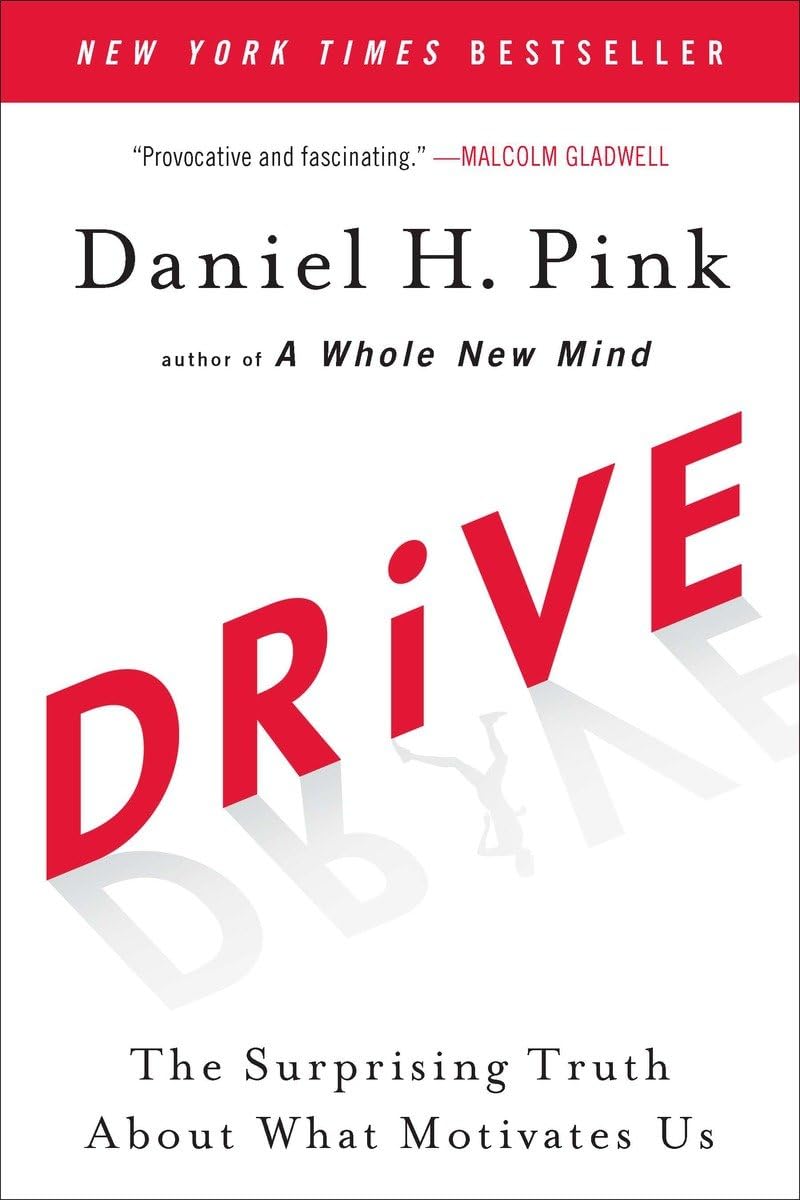
Buy The Book
Chapter
- Part I: Emotional
- ✦ Chapter 1: Unleash the Master Within
- ✦ Chapter 2: Master the Art of Storytelling
- ✦ Chapter 3: Have a Conversation
- Part II: Novel
- ✦ Chapter 4: Teach Me Something New
- ✦ Chapter 5: Deliver Jaw-Dropping Moments
- ✦ Chapter 6: Lighten Up
- Part III: Memorable
- ✦ Chapter 7: Stick to the 18-Minute Rule
- ✦ Chapter 8: Paint a Mental Picture with Multisensory Experiences
- ✦ Chapter 9: Stay in Your Lane
Talk Like TED: The 9 Public-Speaking Secrets of the World’s Top Minds

About
Carmine Gallo, a communication coach and bestselling author, dissects the art of impactful presentations in “Talk Like TED.” By analyzing hundreds of TED Talks and interviewing successful speakers, Gallo identifies nine key secrets to captivating audiences. He argues that memorable presentations are emotional, novel, and memorable, offering practical techniques to achieve this.
The book explores the power of storytelling, the importance of delivering new and exciting information, and the need to create vivid, multisensory experiences. Gallo emphasizes passion, authenticity, and the 18-minute rule to keep audiences engaged. “Talk Like TED” empowers readers to transform their communication skills and deliver presentations that inspire and leave a lasting impression. It is a practical guide for anyone looking to master the art of public speaking.

Spark
Learn
Review
Part I: Emotional
✦ Chapter 1: Unleash the Master Within
In “Talk Like TED,” the opening chapter emphasizes that anyone can become a compelling speaker by tapping into their innate passions. It’s about discovering what truly ignites one’s enthusiasm and making that the core of any presentation.
Passion isn’t merely a nice-to-have; it’s the essential ingredient that elevates a talk from informative to unforgettable. When speakers are genuinely passionate, their energy becomes infectious, captivating the audience and making them more receptive to the message.
To unlock this inner mastery, one must first identify subjects that spark intense curiosity and excitement. This involves introspection and a willingness to explore diverse interests. It’s not necessarily about being an expert but about having a genuine desire to share something meaningful.
Authenticity is paramount. Audiences can detect insincerity, so it’s crucial to speak from the heart. This means being oneself, with all one’s quirks and vulnerabilities. Embrace your unique perspective and let it shine through.
Crafting a compelling narrative starts with focusing on a single, overarching idea. This core concept should be clear, concise, and easily digestible. Everything else in the presentation should support and reinforce this central theme.
Preparation is key, but it shouldn’t stifle spontaneity. Practice the talk thoroughly, but allow room for improvisation and adaptation. The goal is to be comfortable enough with the material to engage naturally with the audience.
Visual aids should enhance, not distract from, the message. Use images and videos strategically to illustrate points and add emotional impact. Keep slides simple and uncluttered, focusing on visual storytelling rather than dense text.
Ultimately, effective public speaking is about connecting with others on a human level. By unleashing one’s inner passion, embracing authenticity, and crafting a clear and compelling narrative, anyone can deliver a talk that resonates and inspires.
✦ Chapter 2: Master the Art of Storytelling
The ability to connect with an audience on a human level through narrative is explored. Stories aren’t just embellishments; they’re the core of persuasive communication, essential for reaching both hearts and minds.
The chapter emphasizes that effective speakers use storytelling to create a bridge with their audience, fostering trust and making complex topics relatable. By sharing anecdotes and personal experiences, speakers invite listeners into their world, making them more receptive to the message.
Storytelling is framed as a vital tool for overcoming resistance and building rapport. It’s suggested that by crafting compelling narratives, speakers can dismantle preconceived notions and encourage empathy, particularly when addressing sensitive or controversial subjects.
Analyzing a renowned TED talk, it’s shown how a substantial portion of the presentation was dedicated to storytelling, highlighting the speaker’s reliance on emotional appeal (pathos) over mere data or credentials. This underscores the idea that logic alone isn’t enough to persuade; a story’s emotional resonance is key.
The science behind storytelling is discussed, noting how personal narratives can synchronize the brains of the speaker and listener. This “brain-to-brain coupling” enables the transfer of ideas, thoughts, and emotions, creating a powerful connection.
Three effective story types are outlined: personal experiences that connect to the presentation’s theme, stories about others that teach relatable lessons, and stories about brand successes or failures. By selecting the right kind of narrative, speakers can capture attention, create curiosity, and transform abstract concepts into vivid, memorable ideas.
Ultimately, the chapter posits that anyone can become a more engaging speaker by mastering the art of storytelling, using anecdotes and carefully chosen narratives to inspire, persuade, and leave a lasting impact on their audience.
✦ Chapter 3: Have a Conversation
Effective public speaking is reframed as an intimate dialogue, rejecting the notion of a formal, one-sided lecture. Speakers are encouraged to connect with their audience as if they were engaging in a genuine, personal chat.
Authenticity is key. It’s about being oneself, avoiding artificiality, and letting one’s true personality shine through. Audiences respond to sincerity, so speakers should strive to be real and relatable.
Eye contact is essential. It forges a connection with individual audience members, making them feel seen and heard. A speaker should aim to make brief, meaningful eye contact with various people throughout the room.
Body language should be natural and expressive. Avoid stiffness or robotic movements. Use gestures to emphasize points and convey enthusiasm. The goal is to appear comfortable and confident, as if conversing with a friend.
Verbal delivery should be engaging and varied. Modulate one’s tone, pace, and volume to keep the audience interested. Avoid monotone delivery, which can quickly lose listeners’ attention.
Rehearsing is crucial, but it shouldn’t lead to a rigid, memorized performance. Practice enough to be familiar with the material, but allow for spontaneity and adaptation. The aim is to sound natural, not robotic.
Passion for the subject matter is contagious. When a speaker is genuinely enthusiastic, the audience is more likely to be engaged. Let one’s excitement shine through.
By adopting a conversational approach, speakers can create a more intimate and engaging experience for their audience. It’s about building a connection, fostering trust, and making the message more memorable. The idea is to ditch the lecture format and embrace the art of a genuine, heartfelt conversation.
Part II: Novel
✦ Chapter 4: Teach Me Something New
In “Talk Like TED,” it’s suggested that to truly engage an audience, one must offer them novel insights. The human brain is wired to seek out new information, and presentations that deliver fresh perspectives are inherently more captivating.
The chapter highlights the importance of presenting unique angles on familiar subjects. Audiences are more likely to remember information that challenges their existing beliefs or provides a different lens through which to view the world.
The most successful TED speakers often introduce groundbreaking research, innovative ideas, or unexpected applications of existing knowledge. This element of surprise is crucial for holding the audience’s attention and making the presentation memorable.
One way to achieve this is by sharing personal experiences that led to a new understanding or revelation. These anecdotes add authenticity and make the information more relatable.
It’s also emphasized that the presentation should be structured in a way that gradually unveils new information, building anticipation and keeping the audience curious. This can be achieved by posing a question at the beginning and then providing answers throughout the talk.
Furthermore, incorporating visual aids, demonstrations, or interactive elements can help to illustrate new concepts and make them easier to grasp. The goal is to make the learning experience as engaging and immersive as possible.
The core idea is that people are naturally drawn to the unfamiliar. By offering new insights, perspectives, and information, speakers can tap into this innate curiosity and create a presentation that leaves a lasting impact. It’s about igniting a sense of wonder and inspiring the audience to think differently.
✦ Chapter 5: Deliver Jaw-Dropping Moments
In “Talk Like TED,” it’s argued that to create a truly unforgettable presentation, you need to include moments that elicit a “wow” reaction from the audience. It goes beyond simply delivering information; it’s about crafting experiences that leave a lasting impact.
The chapter emphasizes that these moments don’t happen by accident; they’re carefully designed and executed. It requires creativity, attention to detail, and a willingness to take risks.
Several examples are given to illustrate this point, showcasing TED speakers who have used surprising demonstrations, stunning visuals, or unexpected twists to captivate their audience. These moments serve as focal points, enhancing the message and making it more memorable.
One key aspect is the element of surprise. It’s about defying expectations and presenting something that the audience hasn’t seen or heard before. This can involve unveiling a new technology, sharing a personal story with a shocking revelation, or presenting data in a visually arresting way.
It’s also noted that effective “jaw-dropping moments” are closely tied to the speaker’s core message. They’re not just gratuitous displays of spectacle but rather serve to reinforce the key themes and ideas.
The chapter suggests that the most effective way to create these moments is to think like a storyteller. Consider what would create the most emotional impact and then work backward to design a presentation that builds towards that climax.
Ultimately, it posits that by carefully crafting “jaw-dropping moments,” speakers can transform their presentations from informative to truly unforgettable, leaving a lasting impression on their audience and ensuring that their message resonates long after the talk is over. It’s about sparking that sense of wonder and astonishment.
✦ Chapter 6: Lighten Up
The strategic integration of humor can significantly elevate a presentation. Injecting moments of levity humanizes the speaker, making them more relatable and forging a deeper connection with the audience.
Genuine humor transcends mere joke-telling; it’s about unveiling one’s authentic self. Self-deprecating humor, specifically, can disarm listeners and cultivate a sense of camaraderie. It reveals vulnerability, making the speaker seem more approachable and down-to-earth.
It’s important to be cautious about forced or unsuitable humor. What one person finds amusing, another may find offensive. Speakers should be aware of their audience and their own comfort zone. Authenticity is key; humor should stem naturally from one’s personality and the context of the situation.
Examining successful presentations reveals that many speakers employ humor sparingly but to great effect. A well-timed quip or witty remark can release tension, underscore a point, or simply enhance the overall enjoyment of the presentation.
However, it’s emphasized that humor isn’t a prerequisite for a great presentation. A speaker shouldn’t feel compelled to be funny if it doesn’t come naturally. Sincerity and passion are more valuable than manufactured jokes. If humor feels contrived, it’s likely to fall flat.
Instead, consider finding humor in everyday occurrences. Share entertaining stories, quirky observations, or lighthearted viewpoints on serious subjects. The objective is to foster moments of amusement and connection, not to transform into a comedian.
Ultimately, the key is to embrace one’s natural sense of humor, if it exists, and use it purposefully to enhance presentations. However, authenticity and genuine connection remain paramount, and manufactured humor is never a substitute for sincerity. Being true to oneself, including all quirks, is always the most effective strategy.
Part III: Memorable
✦ Chapter 7: Stick to the 18-Minute Rule
This section explores why the most effective presentations adhere to a concise 18-minute timeframe. It suggests that this isn’t an arbitrary limit but rather a sweet spot for maintaining audience engagement and maximizing information retention.
The rationale behind the 18-minute rule is rooted in cognitive science. It’s argued that after 18 minutes, the audience’s attention begins to wane, and their ability to process information diminishes. Brief presentations force speakers to focus on their core message and eliminate extraneous details.
Several historical examples are given to support this claim, noting that even influential speeches throughout history have typically fallen within this timeframe. The Gettysburg Address, for instance, was famously short and impactful.
The challenge of delivering a compelling presentation in just 18 minutes encourages speakers to be more creative and disciplined. It necessitates careful planning, rigorous editing, and a clear understanding of the audience’s needs.
One strategy discussed is to break the presentation into smaller segments, each lasting just a few minutes. This helps to maintain the audience’s interest and prevents them from feeling overwhelmed.
It’s also suggested that visual aids and storytelling can be particularly effective in short presentations. These techniques can help to convey complex information in a concise and memorable way.
The core idea is that brevity is a virtue. By adhering to the 18-minute rule, speakers can ensure that their message is heard, understood, and remembered. It’s about respecting the audience’s time and making every minute count. This constraint fosters creativity and forces a focus on what truly matters, resulting in a more impactful and engaging presentation.
✦ Chapter 8: Paint a Mental Picture with Multisensory Experiences
To make a presentation truly memorable, it’s suggested that you go beyond simply conveying information and instead create a vivid, immersive experience for the audience. Engage their senses and transport them to another place and time through descriptive language and evocative visuals.
The core idea is that the more senses you stimulate, the stronger the connection you forge with your audience and the more likely they are to remember your message. Think about how the aroma of freshly baked bread can instantly trigger a flood of memories and emotions. The goal is to harness this power of sensory detail in your presentations.
Consider using rich, descriptive language that appeals to sight, sound, smell, taste, and touch. Instead of saying “the room was dark,” describe the inky blackness that swallowed everything whole, the faint scent of old wood, and the feeling of dampness clinging to the skin.
Visual aids can also play a crucial role in creating a multisensory experience. Use images and videos that are not only visually appealing but also emotionally evocative. Think about how a single photograph can capture a complex idea or tell a powerful story.
It’s also noted that props, demonstrations, and interactive elements can further enhance the sensory impact of a presentation. Allow your audience to touch, taste, or smell something related to your topic. The aim is to make the experience as tangible and real as possible.
Don’t be afraid to experiment with unconventional techniques. Play music, show video clips, or even incorporate smells into your presentation. The key is to be creative and find ways to engage your audience’s senses in a meaningful way. The more fully your audience experiences your message, the more likely it is to stick with them.
✦ Chapter 9: Stay in Your Lane
This section emphasizes the importance of authenticity in public speaking. It’s suggested that the most effective speakers are those who embrace their unique perspectives and speak from a place of genuine expertise.
The core idea is that trying to be someone you’re not will ultimately backfire. Audiences can sense insincerity, and attempts to imitate others often come across as forced and unnatural.
It’s recommended that speakers focus on their strengths and passions. What unique knowledge or experiences do you possess? What topics genuinely excite you? These are the areas where you can truly shine.
One key aspect is knowing your audience. Tailor your message to their interests and needs, but don’t compromise your authenticity. Speak to them in a way that feels natural and comfortable.
The chapter also cautions against straying too far from your area of expertise. While it’s good to be knowledgeable about a variety of subjects, it’s best to stick to the topics where you have real authority.
Preparation is essential, but it shouldn’t stifle your personality. Practice your talk thoroughly, but allow room for spontaneity and improvisation. The goal is to be confident and knowledgeable, but also relatable and human.
It’s noted that vulnerability can be a strength. Don’t be afraid to admit what you don’t know or to share personal stories that reveal your flaws. Authenticity often means being willing to be imperfect.
Ultimately, the message is clear: be yourself. Embrace your unique perspective, speak from the heart, and stay true to your values. When you do that, you’ll connect with your audience on a deeper level and deliver a presentation that is both compelling and authentic. It’s about owning your voice and sharing your unique perspective with confidence.
For People
– Public speakers
– Business professionals
– Leaders
– Entrepreneurs
– Students
Learn to
– Improved public speaking skills
– Engaging presentation techniques
– Persuasive communication strategies
– Effective storytelling methods
– Increased confidence









